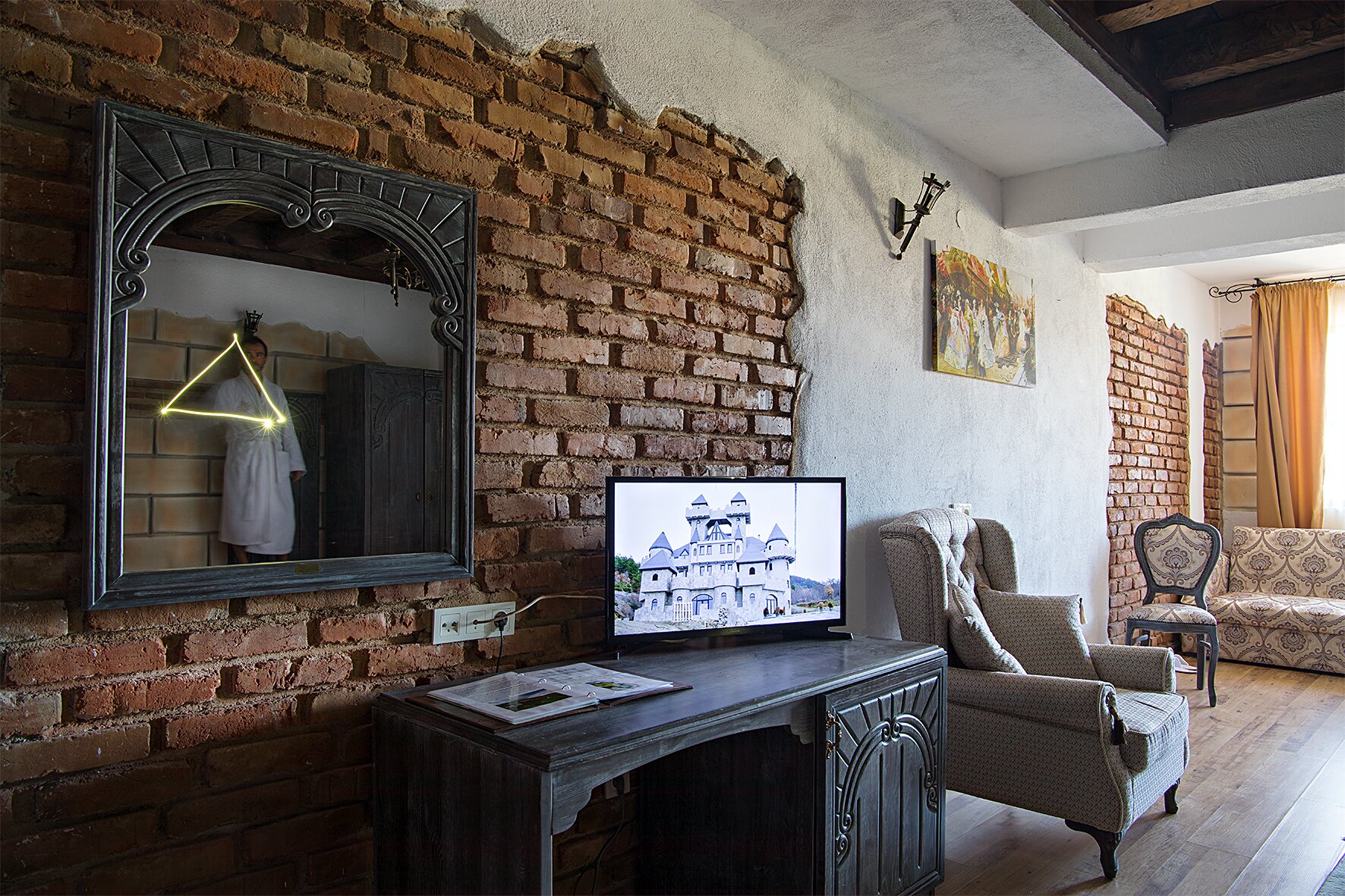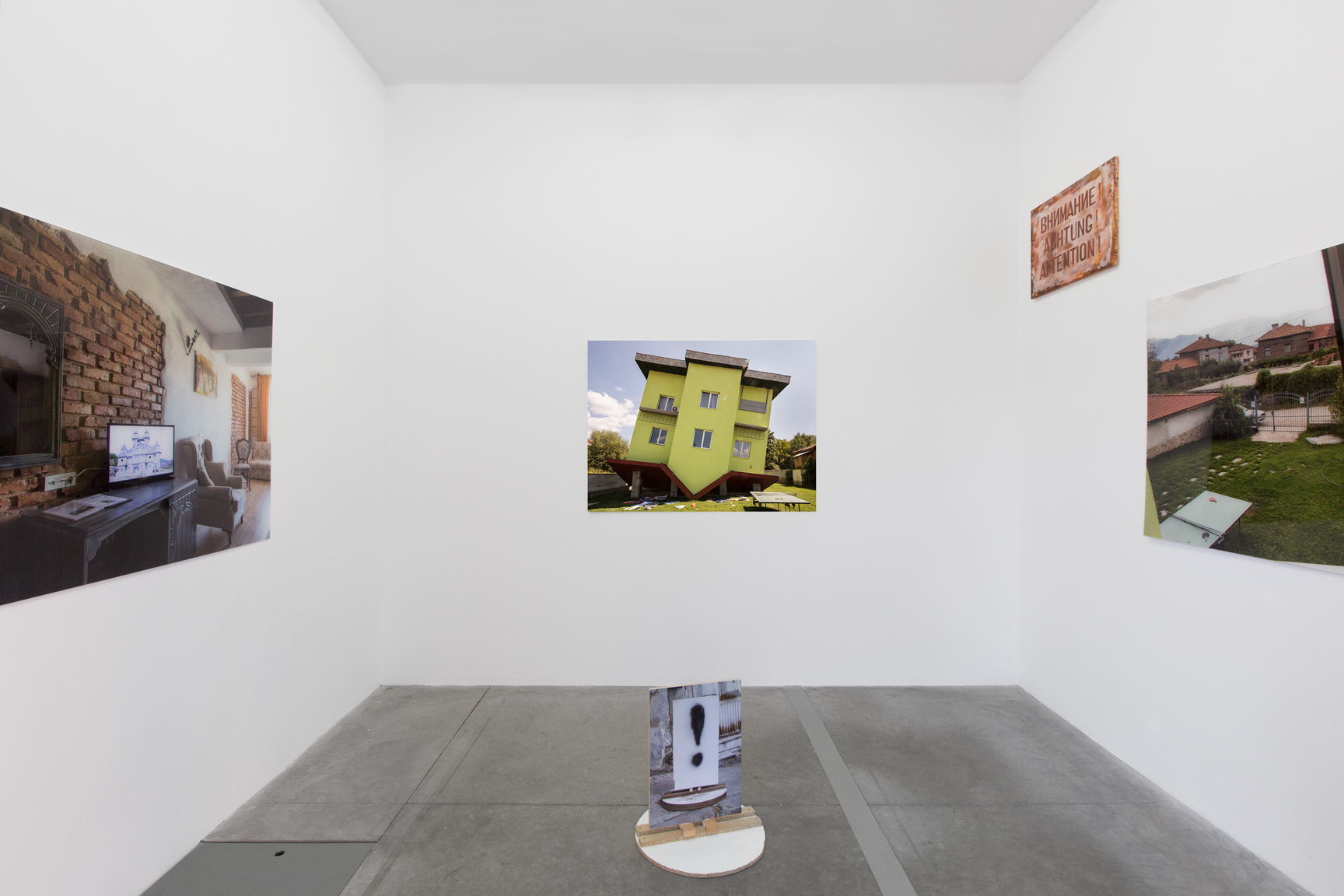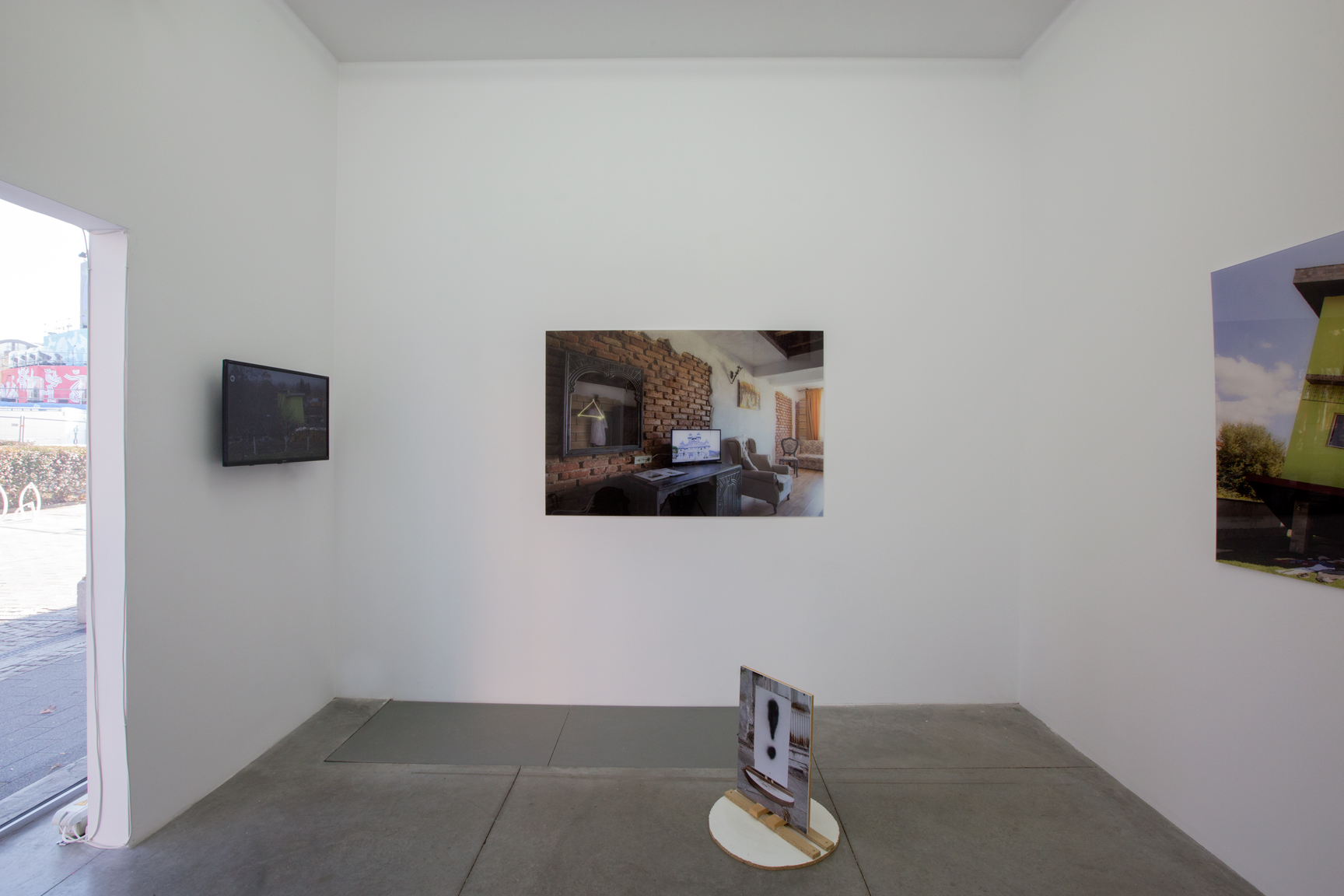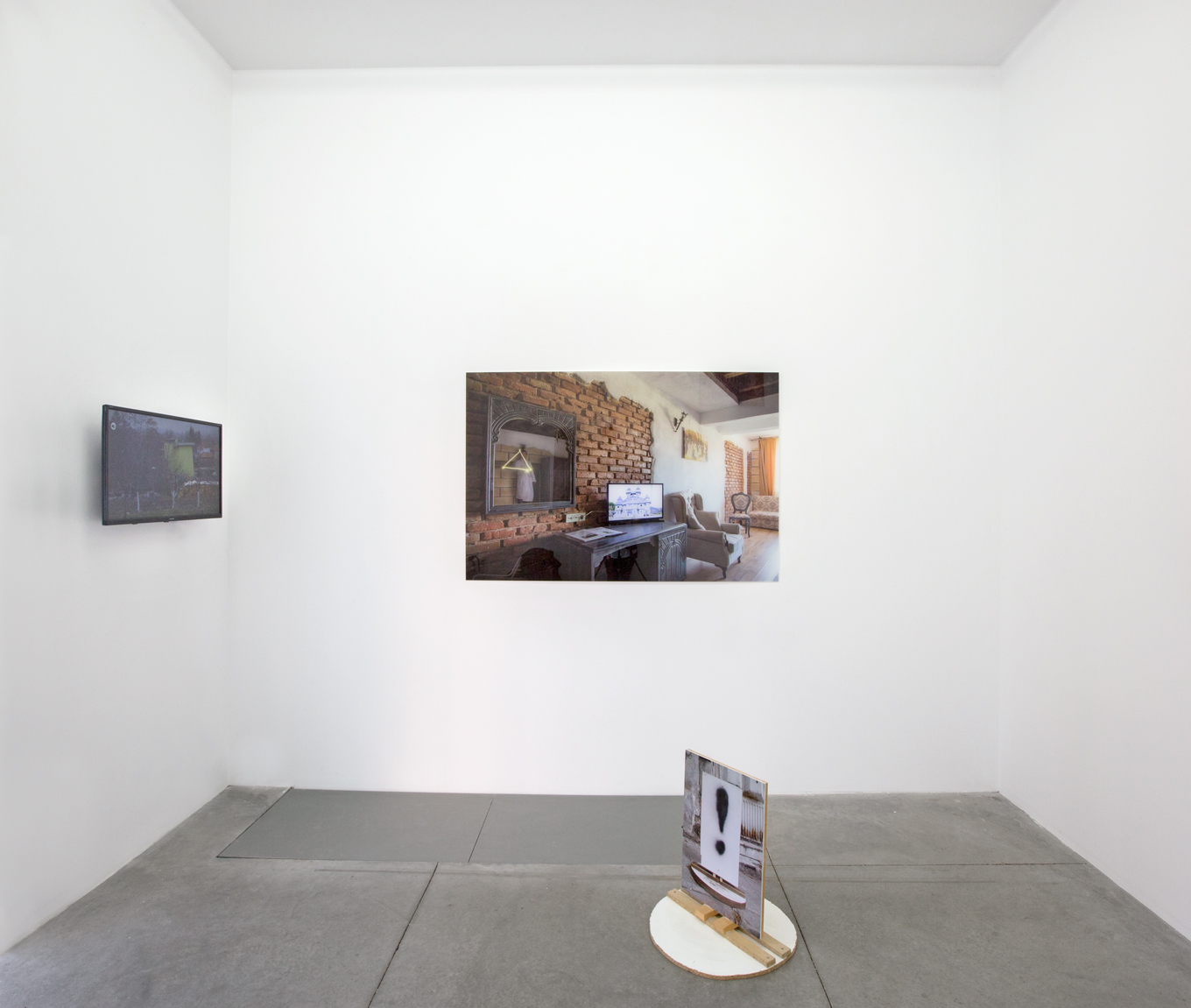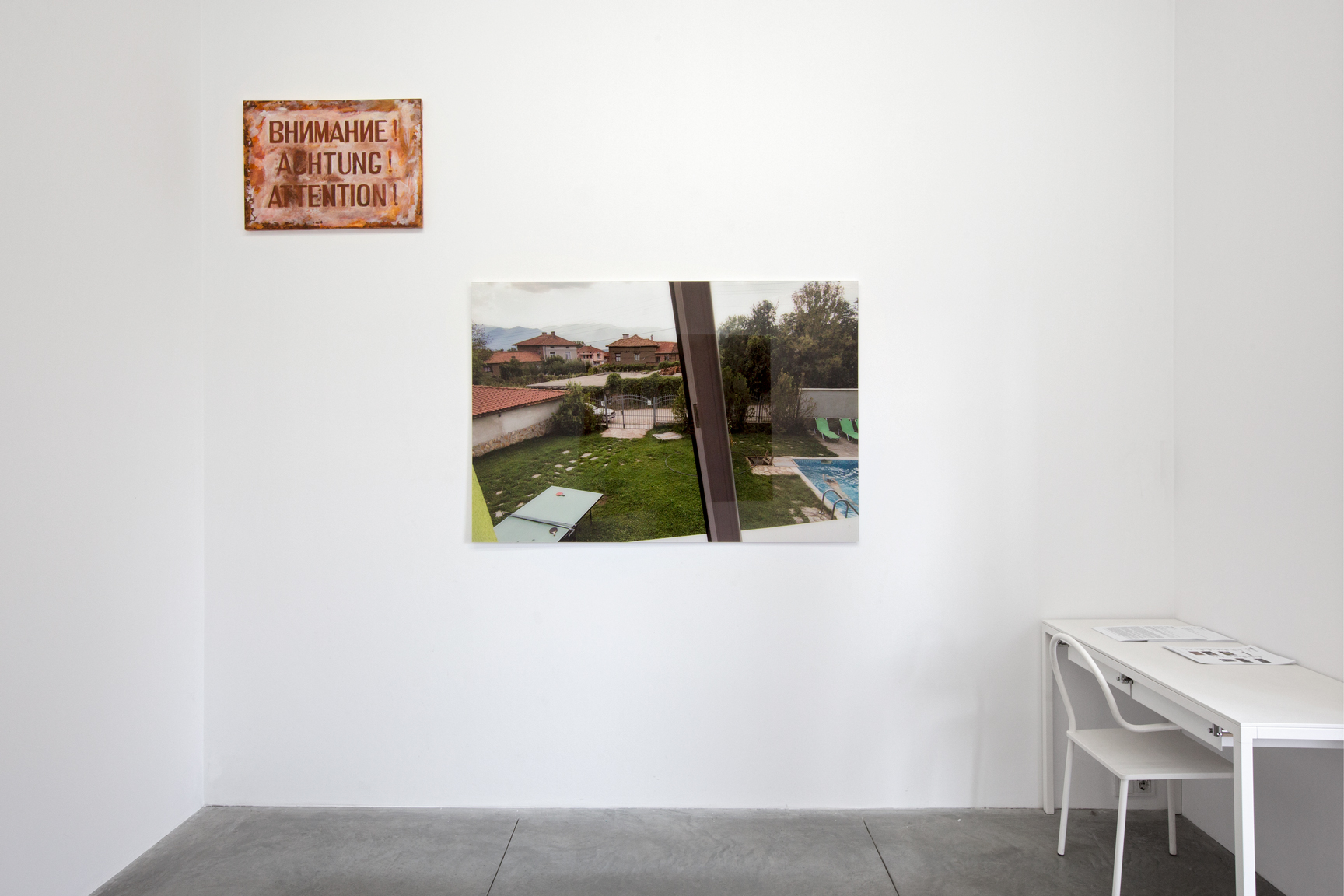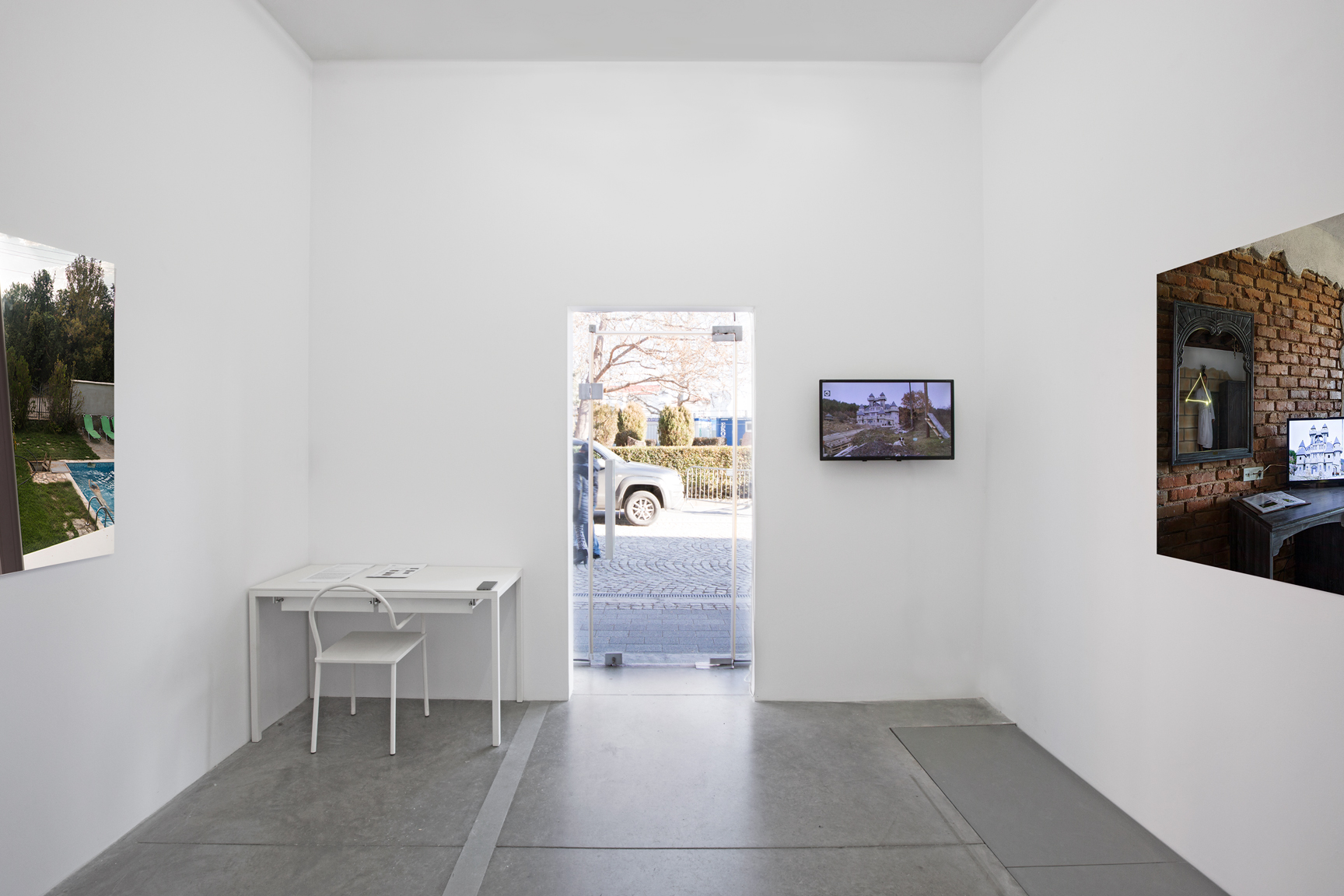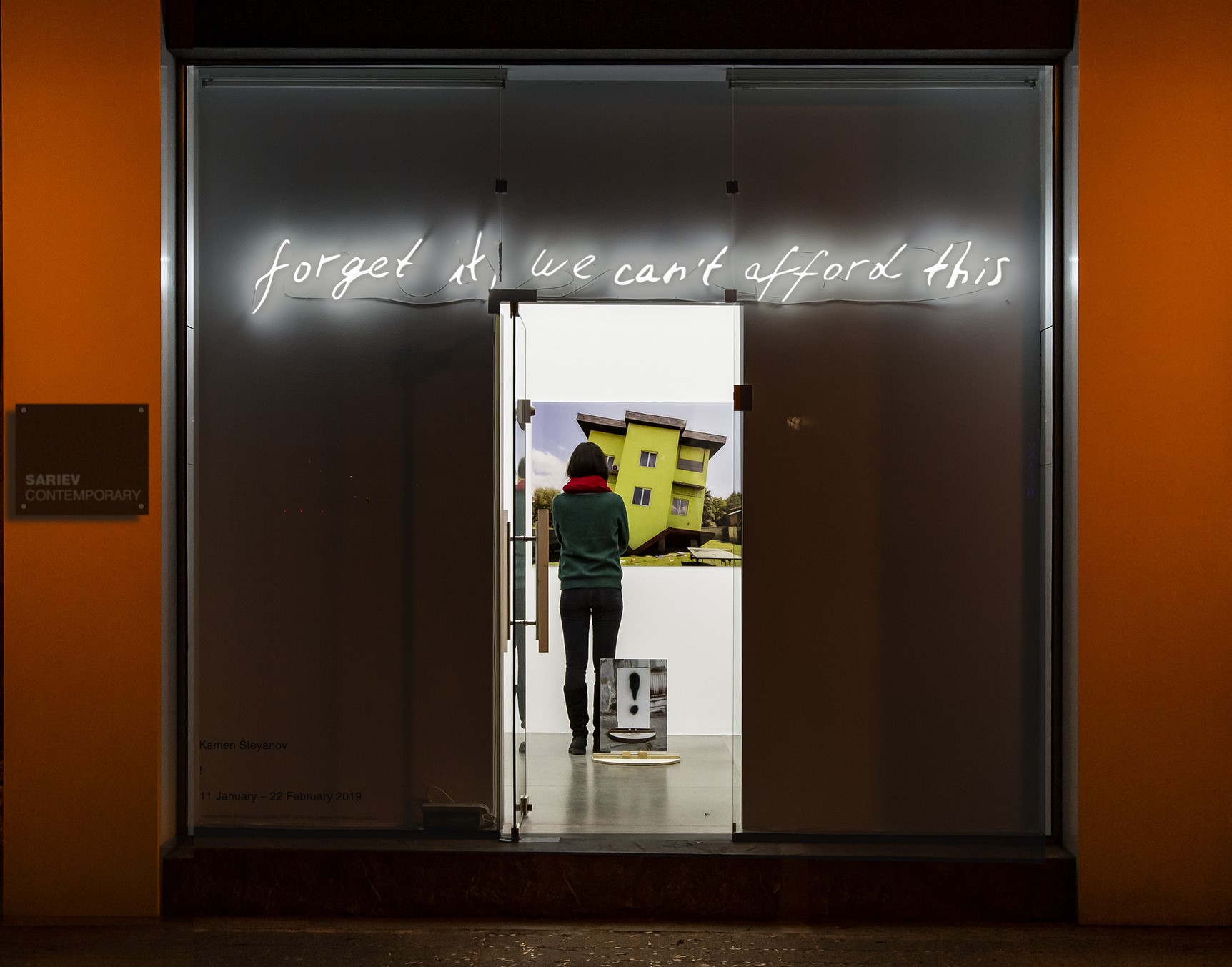11 January 2019 – 22 February 2019
!
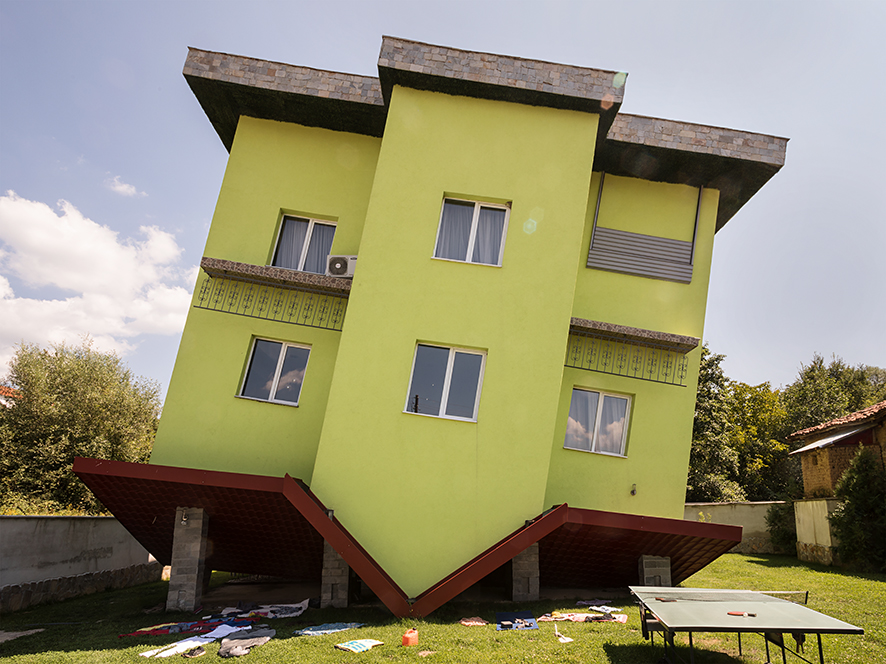
SARIEV Contemporary, Plovdiv is pleased to present the solo show "!" by the gallery represented artist Kamen Stoyanov.
The exhibition will take place from 11 January to 22 February 2019 in the gallery space, and the vernissage will take place on 11 January, 4 pm – 8:30 pm in the presence of the artist.
The vernissage is part of the long weekend of the opening of Plovdiv – European Capital of Culture 2019 (11-13 January 2019)
Exhibition text by Boris Kostadinov
-
At the entrance of Sariev Contemporary we are welcomed by a neon sign: "Forget it, we can't afford this". I do not know what the audience's reaction is, but in me this work immediately provoked a funny memory when I tried to bring a group of friends who had nothing to do with modern art, in a gallery. Visibly respected by the super-intrusive gallery lighting and pretentiously exhibited works, they said, "Oh, that's not for us. Let's not go in here". In fact, I would have reacted the same way if I were in front of a showroom where Lamborghini's latest model was exhibited. Our second nature is to classify our social presence not only through our intellectual or moral, but also through our financial potential. But why does a gallery have to put such an absurd inscription on the entrance?
To metaphorize absurdity. It is so common that we have long ago accepted it for granted. The art of Kamen Stoyanov often creates artistic metaphors from absurd circumstances or objects, and thus his connotations are concealed. If we stop studying such a phenomenology or cease to look for the social or political circumstances that have created it, then we risk ourselves becoming actors in the skillfully imposed, vast "absurd" parade of everyday life.
Stoyanov's solo exhibition at Sariev Contemporary reminds us of this with the author's typically intellectual, unobtrusive and at the same time sufficiently sharp, concrete and visually startling language.
His approach is often reminiscent of the classical image of a "mad" scientist misunderstood by his contemporaries, who is looking for his theses and antitheses in the quirks of everyday life.
The "Phantasy is more important" cycle develops a fiction about three queerly looking guest houses in the village of Marchevo. A place that is half-deserted but has a mineral spring. Circumstances which, when placed in the context of the neoliberal world, imply the emergence of all kinds of marketing tricks.
The video – part of the exhibition, begins with a skillfully crafted and yet sham doll in Madame Tussauds style. This is Albert Einstein, who dreamily watches something, leaning against the railing of a guest house's balcony, which on the top of it all is called “Einstein Spa Hotel”. The dignified gentleman is sunk into contemplation and silence that continue until the end of the video. In fact, "Phantasy is more important" is a quote taken precisely by Albert Einstein. Now he himself has become the subject of someone's unbridled fantasy, not aimed at creating new scientific theories, but emerged from the local entrepreneurial activity.
As if creating cinematographic still-life, Stoyanov continues to shoot the other hotels in this strange Bulgarian village. There follows a semi-evil, semi-funny medieval castle, "sprouted" near the forest. Here the dose of butaforia is no less than that of Einstein's house. The imitation of the mysterious past penetrates through pallets that have just come out of the factory, with bricks and concrete elements.
We reach the climax of the film. Believe it or not, but in Marchevo there is an absolutely real house that is built with its roof down. Everything in this house is upside down – the chimneys play the role of columns that support the construction, and visitors must, of course, enter through the roof in order to climb to the foundations of the house. Interiors also follow this logic, with beds legs and wardrobe legs protruding upwards. Only the living creatures that come into the house are subjected to gravity. Some new theory of relativity, absurdly in line with Mr Einstein's work, who lives at the neighbors.
If the film "Phantasy is more important" gradates in line with the astonishment of the author, in the series of photographs, also part of this cycle, Kamen Stoyanov takes on the role of consumer of the magic offered by this unusual resort. He spends several days as a guest at Marchevo’s hotels. One of the photographs portrays the upside down house, but the personal belongings of the author are scattered in the yard. They are, however, placed in their usual form – without being turned upside down. This artistic approach, in addition to creating further confusion in the viewer, visualizes the artist's critical stance. The dilemma of whether to accept or not the dictate of absurdity that surrounds us daily and which enjoys an enviable stimulating economic and social reality, is resolved through a unobtrusive but categorical visual and conceptual expression that turns into a clear metaphor.
A similar suggestion we get from the other photograph, which shows a glance from the hotel room to the courtyard pool. Outside, the world functions in its usual form. There is a floating naked body in the pool. Whether this is a Hockney's replica or a sophisticated critical analysis, the viewer must decide for himself.
The third photograph takes us inside the castle. At this hotel, the artist spends his second magic night, in which a mysteriously luminous reflection is seen in the mirror on the wall of the hotel room. Given it is a medieval castle, the logical association would be the spirits of long-lived aristocrats. But are they not, in fact, the spirits of the local entrepreneurial commercial spread, since we saw that the castle was built of concrete modules and its rooms are air-conditioned and offer satellite TV?
The last metaphor in the exhibition is "Sign of Exclamation" – an object-photograph. Such amateur urban interventions are common in Bulgaria. Someone has demonstrated self-initiative, and through found materials has hastily made a street sign to mark some territory or activity that is important for him. The author again documents an absurdity of everyday life, but it gradates in an even more absurd framework. The photo is placed on a real, badly done rigid pedestal. It is identical to the one on which the sign from the photograph is placed.
The exhibition looks at some forms of imagination that is harnessed in the idea of developing business models. Popular public art, which is used as an attraction for customers. Stoyanov does not only question the way in which popular art or visual attraction is used for commercial purposes. He intervenes skillfully in the existing infrastructure and explores how the contemporary artist placed in the context of mass culture can work on forms of art that make it similar to the forms of spectacle – with numerous and complex plot lines.
Boris Kostadinov, December 2018
-
Kamen Stoyanov was born in 1977 in Rousse, Bulgaria. He lives and works in Vienna and Sofia. He studied from 1996 to 2003 at the National Academy for Fine Arts in Sofia and from 2000 to 2005 at the Academy of Fine Arts in Vienna. Kamen Stoyanov’s work is multimedial including film, photography, video, performance, drawings, installation and the mixture of them. Over the past few years his films, actions, videos, installations, photographic works and performances have been shown, among others, at exhibitions such as “In-Visible” (Cultural Center Tobacna, Ljubljana, 2018, solo); “Exhibiting the Exhibition” (Kunsthalle Baden-Baden, 2018); WRO Biennale (WRO Art Center, Wroclaw, 2017); “Ask the Artist”, MANIFESTA 11 (Zurich, Switzerland, 2016); “Will I be happy?” (Inda Gallery, Budapest, 2016, solo); “Operantium”, Projektraum LS43, Berlin, 2016, solo); “Let them draw”, (Sariev Contemporary, Plovdiv, 2016); “Urbanauts”, Projektraum Viktor Bucher, Vienna (2015); “Past future-future past” (Transmediale, Supermarkt, Berlin, 2014); “The Movement of the Whole” (Inda Gallery, Budapest, 2014); “Unexpected Encountrers” (Camera Austria, Graz, 2013); “Material and Culture” (MAK Center for Art and Architecture, Los Angeles, 2012); 17th Biennale of Sydney (Museum of Contemporary Art, Sydney, 2010); Aichi Triennial, (Nagoya, 2010); “At Arm's Length”, MUMOK (Museum moderner Kunst Stiftung Ludwig, Vienna, 2008, solo); MANIFESTA 7, the European biennial of contemporary art (Trentino, 2008).
He's been awarded, among others, with the following prizes: The Sovereign European Art Prize (2011), Otto Mauer Prize (2011), Alexander Resnikov Award (2010), Kunstpreis Europas Zukunft, (Galerie für Zeitgenoessische Kunst Leipzig, 2008) MUMOK Prize for the Zone1 at the VIENNAFAIR (2007), Prize for Visual Arts of the City of Vienna (2007) and with the MAK Schindler Artists and Architects-in-Residence Program in Los Angeles (2012).
His works are part of public collections (Lentos, Austria; MAK MAK – Austrian Museum of Applied Arts; MUMOK, Austria; MUSA, Austria, Public Collection of the Austrian Government; Sofia City Art Gallery, Bulgaria) and private collections (ESSL MUSEUM, Austria; EVN Collection, Austria; DOM MUSSEUM, Austria).
Kamen Stoyanov is represented by Sariev Contemporary since 2017.
The show in the media
Exhibition of Kamen Stoyanov at Sariev gallery
Bulgarian National Radio - 18 January 2019
link
Artist Kamen Stoyanov and Sariev gallery started the year with an exclamation sign
Bulgarian National Television - 19 January 2019
link
-
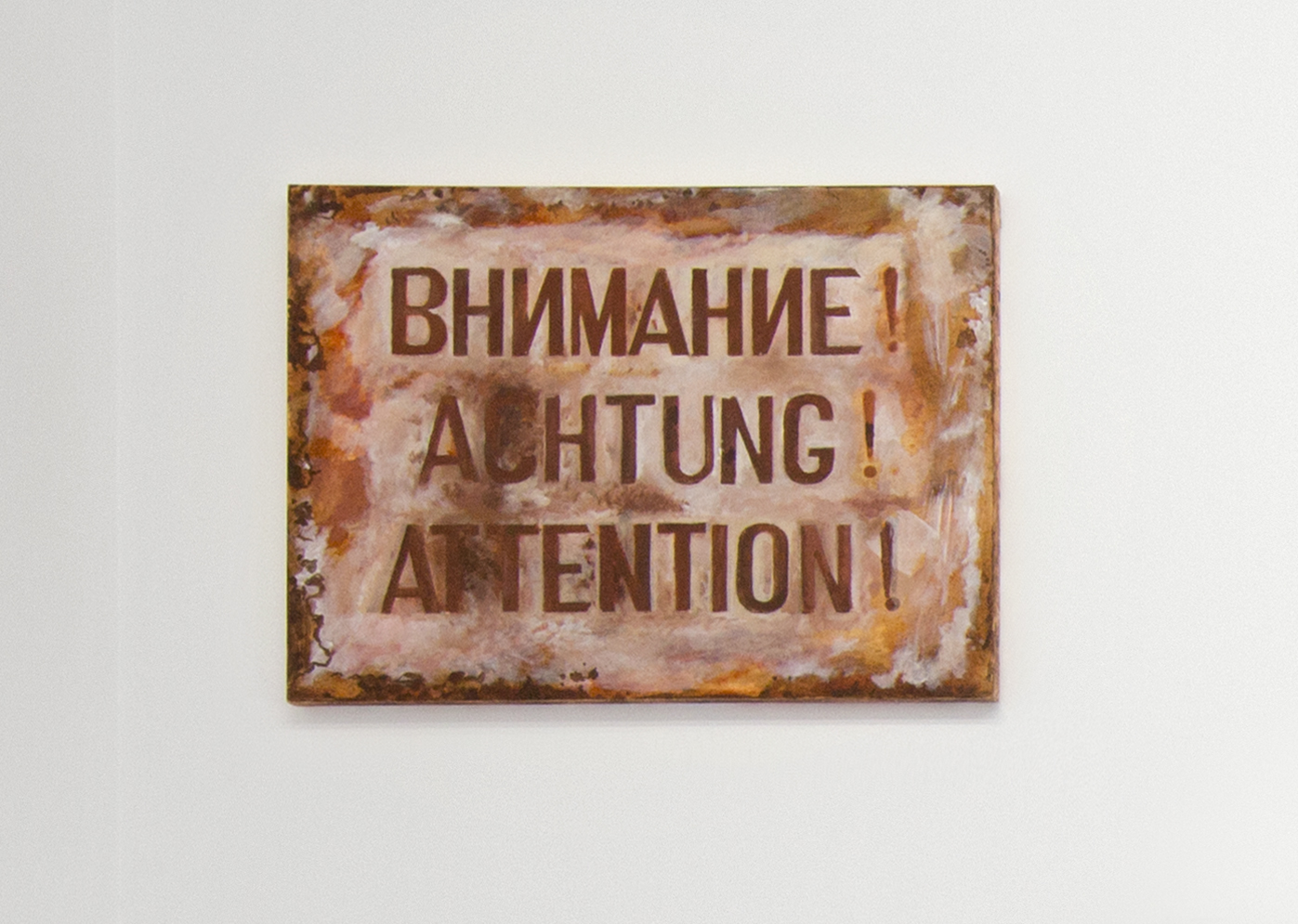 Kamen Stoyanov
Achtung!, 2019
painting
Kamen Stoyanov
Achtung!, 2019
painting
50 x 70 cm -
 Kamen Stoyanov
Forget it, we can’t afford this, 2011
neon
Kamen Stoyanov
Forget it, we can’t afford this, 2011
neon
approx. 25 x 300 cm -
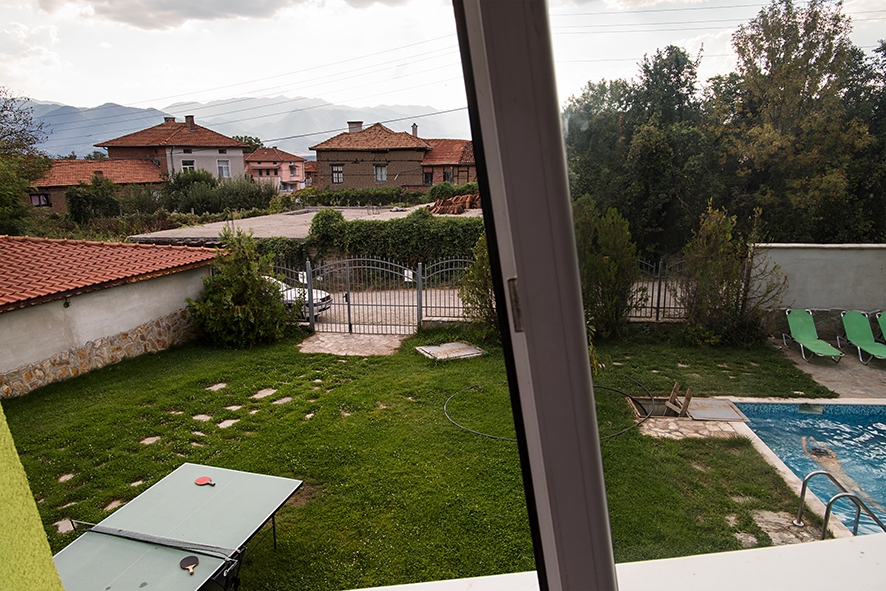 Kamen Stoyanov
Phantasy is more important (From the Upsidedown House), 2018
Diasec
Kamen Stoyanov
Phantasy is more important (From the Upsidedown House), 2018
Diasec
100 x 150 cm
edition of 5+1AP -
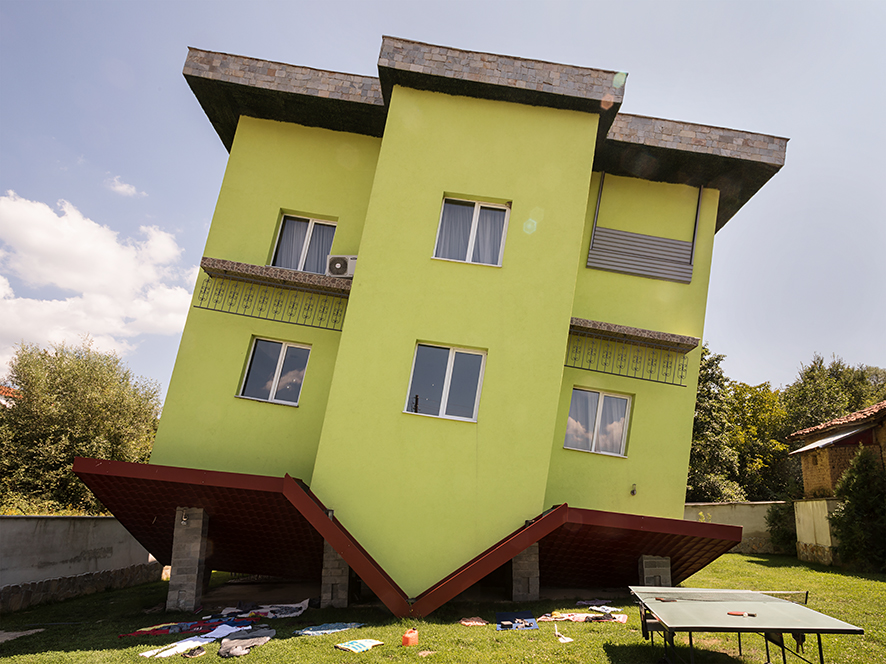 Kamen Stoyanov
Phantasy is more important (The Upsidedown House), 2018
Diasec
Kamen Stoyanov
Phantasy is more important (The Upsidedown House), 2018
Diasec
100 x 133 cm
edition of 5+1AP -
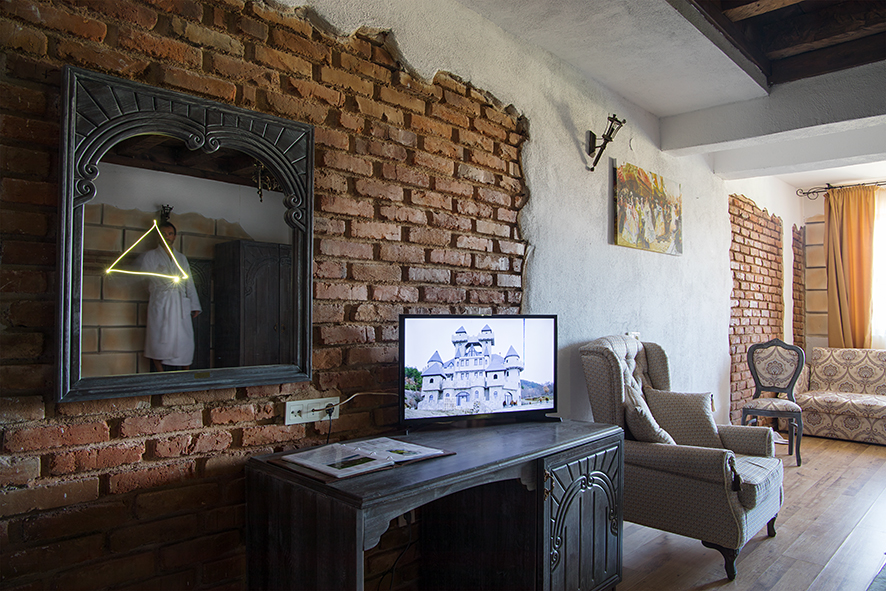 Kamen Stoyanov
Phantasy is more important (Triangle in Valentina Castle), 2018
Diasec
Kamen Stoyanov
Phantasy is more important (Triangle in Valentina Castle), 2018
Diasec
100 x 150 cm
edition of 5+1AP -
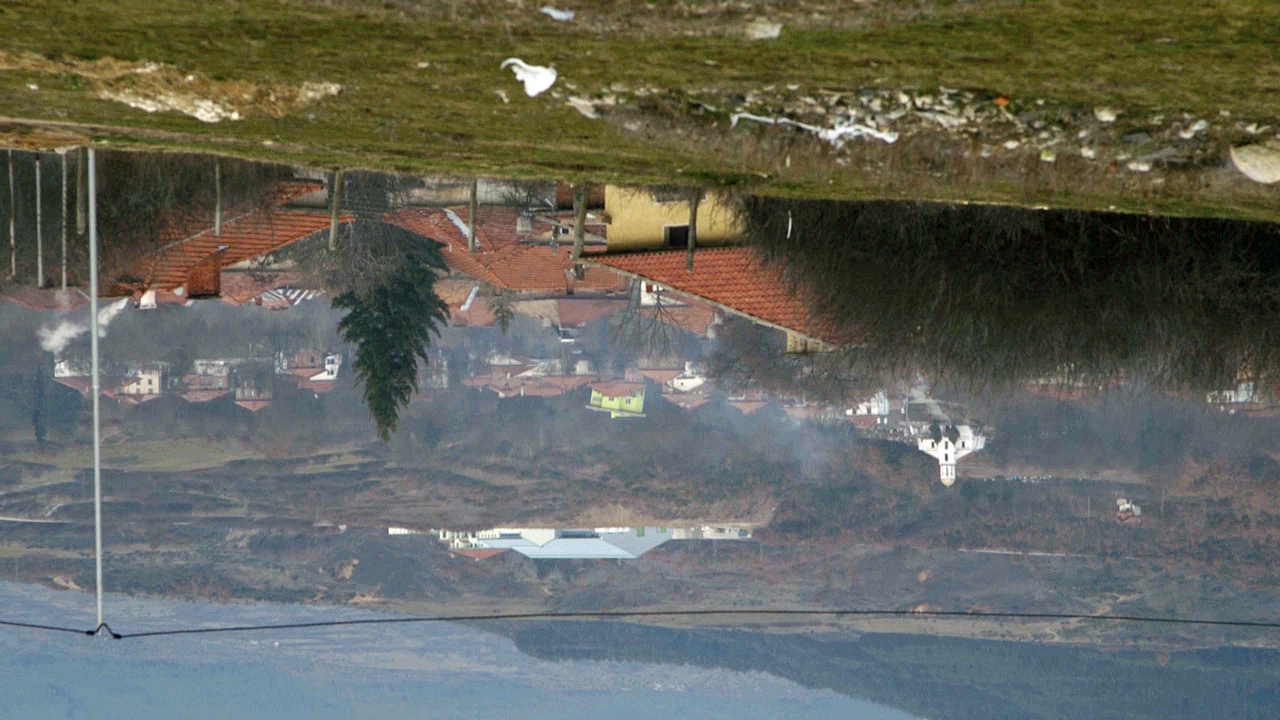 Kamen Stoyanov
Phantasy is more important, 2016-2018
HD video
Kamen Stoyanov
Phantasy is more important, 2016-2018
HD video
5:40 min
edition of 5+1AP "Phantasy is more important" shows guest houses and their surrounding in the mountain village Marchevo in Bulgaria. The video starts with a close up of a realistic figure of Einstein looking out from a balcony. It stays as an attraction/advertising for the House&SPA Einstein. This sculptural silence continues during the whole video, which is composed by still sequences. The culmination point is a house, which at the first view appears skew. It is slowly becoming visible that it was built upside down. The last sequence shows the village from above, rotated in 180 degrees. -
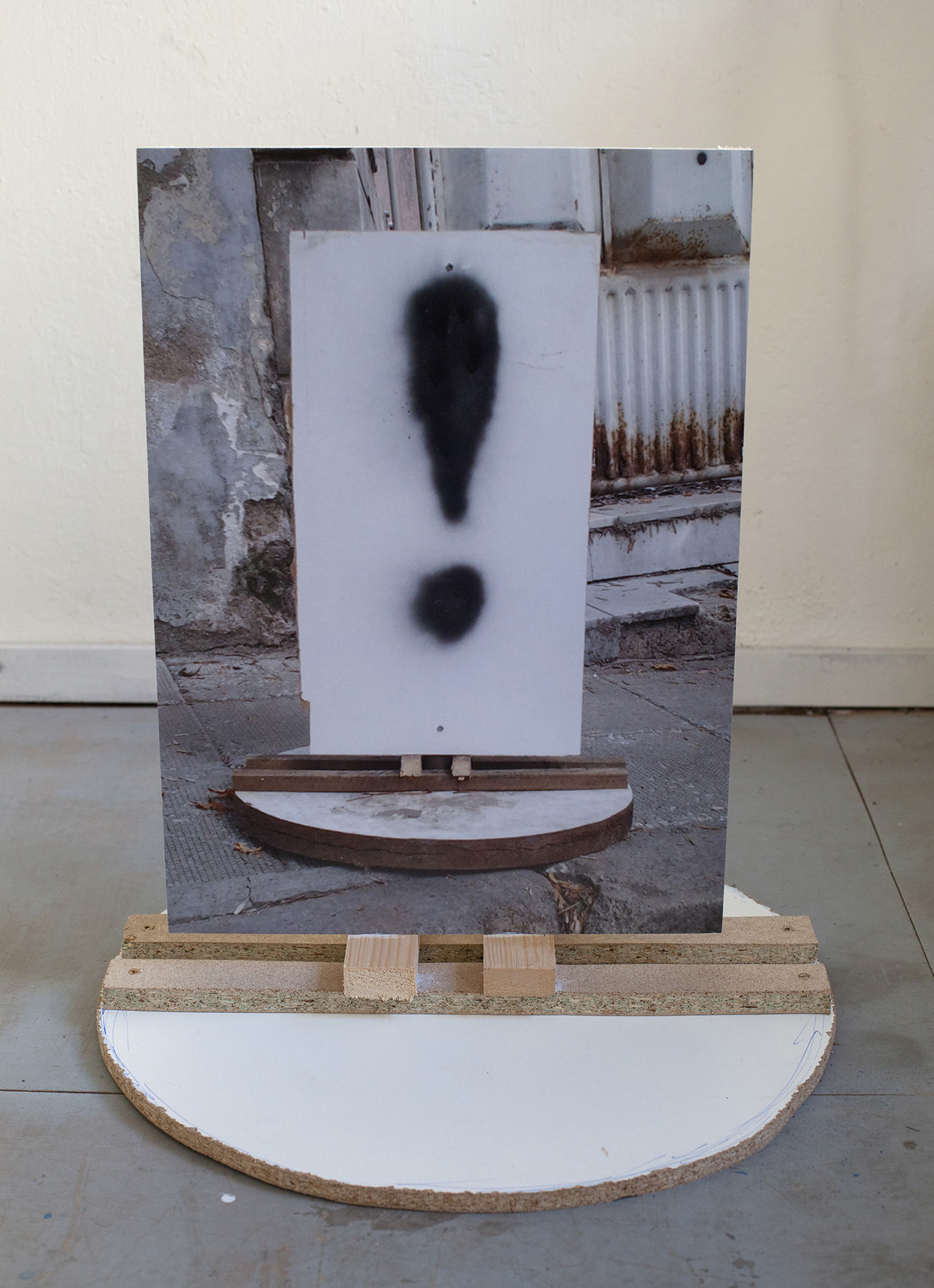 Kamen Stoyanov
Sign of Exclamation, 2015
50 x 55 x 50 cm
Kamen Stoyanov
Sign of Exclamation, 2015
50 x 55 x 50 cm
edition 1/5+1AP
